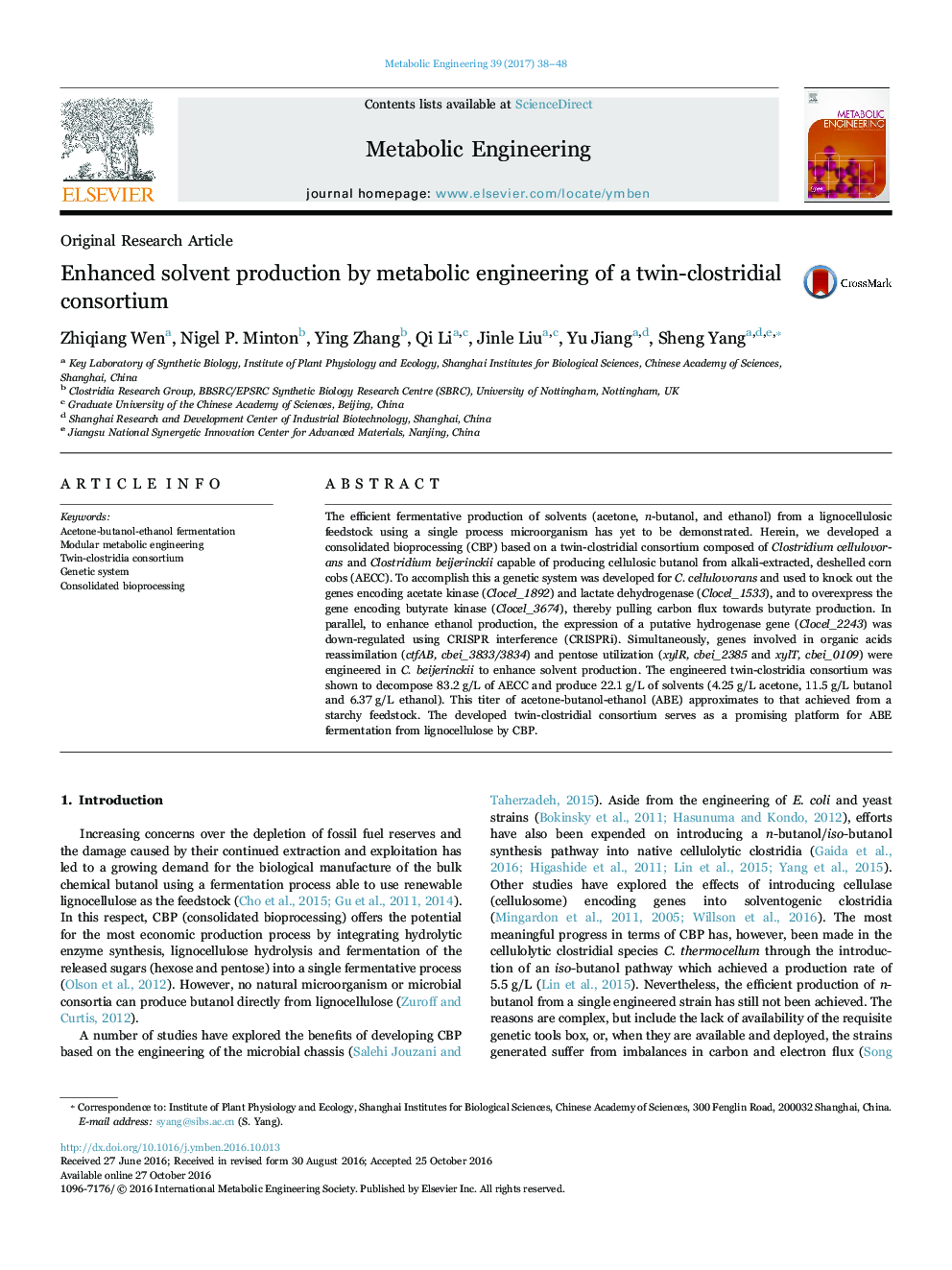| کد مقاله | کد نشریه | سال انتشار | مقاله انگلیسی | نسخه تمام متن |
|---|---|---|---|---|
| 6452770 | 1418339 | 2017 | 11 صفحه PDF | دانلود رایگان |
- An improved genetic system was developed for Clostridium cellulovorans DSM 743B.
- CRISPRi was shown to be an efficient tool for down-regulation of the expression of putative essential genes in Clostridium.
- The engineered consortium of C. cellulovorans DSM 743B and C. beijerinckii NCIMB 8052 produced 22.1Â g/L solvent by CBP.
The efficient fermentative production of solvents (acetone, n-butanol, and ethanol) from a lignocellulosic feedstock using a single process microorganism has yet to be demonstrated. Herein, we developed a consolidated bioprocessing (CBP) based on a twin-clostridial consortium composed of Clostridium cellulovorans and Clostridium beijerinckii capable of producing cellulosic butanol from alkali-extracted, deshelled corn cobs (AECC). To accomplish this a genetic system was developed for C. cellulovorans and used to knock out the genes encoding acetate kinase (Clocel_1892) and lactate dehydrogenase (Clocel_1533), and to overexpress the gene encoding butyrate kinase (Clocel_3674), thereby pulling carbon flux towards butyrate production. In parallel, to enhance ethanol production, the expression of a putative hydrogenase gene (Clocel_2243) was down-regulated using CRISPR interference (CRISPRi). Simultaneously, genes involved in organic acids reassimilation (ctfAB, cbei_3833/3834) and pentose utilization (xylR, cbei_2385 and xylT, cbei_0109) were engineered in C. beijerinckii to enhance solvent production. The engineered twin-clostridia consortium was shown to decompose 83.2Â g/L of AECC and produce 22.1Â g/L of solvents (4.25Â g/L acetone, 11.5Â g/L butanol and 6.37Â g/L ethanol). This titer of acetone-butanol-ethanol (ABE) approximates to that achieved from a starchy feedstock. The developed twin-clostridial consortium serves as a promising platform for ABE fermentation from lignocellulose by CBP.
Journal: Metabolic Engineering - Volume 39, January 2017, Pages 38-48
